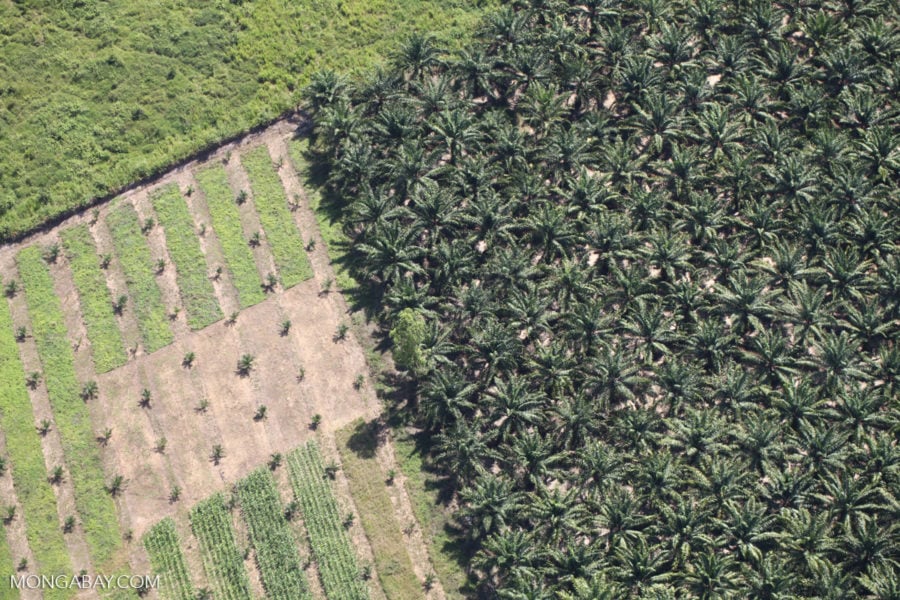Most oil palm is grown in areas that were once species-rich and carbon-rich tropical forests, thanks to the fact that the crop’s natural range is limited to the humid tropics. adidas yeezy boost 550 męskie So where are the active fronts of deforestation for oil palm? And where might they be in the future? Palm oil has become one of the most in-demand agricultural commodities over the past several years and, as such, has also become a significant driver of deforestation. Palm oil and its derivatives are common ingredients in everything from peanut butter and snack foods to shampoo and toothpaste. nike air max
More than 80 percent of the world’s palm oil production occurs in Indonesia and Malaysia, but the patterns of deforestation associated with expansion of oil palm plantations in these two countries, and the associated impacts on biodiversity, are not necessarily the same everywhere in the world. Air Max 2017 UomoA new study led by researchers at Duke University that was published last month in the journal PLOS ONE looked at high-resolution imagery from 20 countries to determine where oil palm plantations have destroyed tropical forests over the past quarter century and where the crop might threaten rainforests in the future. “Many studies focus solely on Indonesia and Malaysia, but oil palm is grown in 43 countries,” Clinton Jenkins of the Institute for Ecological Research in Brazil, a co-author of the study, said in a statement. Tom Brady Jersey “It is essential to understand how future expansion of oil palm plantations is likely to occur in other areas, and what the deforestation and biodiversity impacts might be. By evaluating twenty countries in our study we found that, in terms of these impacts, the picture is very different from country to country and region to region.” The researchers found that existing plantations drove high levels of deforestation between 1989 and 2013, with Southeast Asia accounting for 45 percent of forest destruction for oil palm expansion and South America accounting for just over 30 percent. “Three of the countries — Ecuador, Peru, and Indonesia — are of particular concern,” Duke University’s Varsha Vijay, the lead author of the study, said in a statement. “They have the highest levels of recent deforestation, with more than half of the sample oil palm grown on land deforested during the period.” Relatively low levels of deforestation were found in Mexico, Central America, and the Caribbean (2 percent) as well as in Africa (7 percent). fjallraven kanken sale In those regions, oil palm was grown on areas that had been cleared earlier, most likely for other crops. Vijay and team also analyzed the risk of future deforestation for palm oil production by determining which countries have unprotected forests that are suitable for oil palm plantations. Their analysis showed that all of the countries with a high percentage of deforestation within current oil palm plantations had more than 30 percent unprotected forests that are suitable for oil palm, suggesting great potential for further deforestation in those countries in the future. Indonesia, Ecuador, and Peru exemplify this trend, Vijay and her co-authors wrote in the study. Nike Sko Norge Nettbutikk The largest vulnerable forest areas were found to be in South America and Africa. nike air max 2017 wit The team also examined the vulnerability of the bird and mammal species that occupy these forests. Canotta Minnesota Timberwolves Prioritizing the conservation of small-range and threatened mammal species would necessitate greater protections for areas of the Amazon, Brazilian Atlantic Forest, Liberia, Cameroon, Malaysia, and western Indonesia, the researchers found. Northwestern Wildcats Meanwhile, priority areas for both small range and threatened birds include parts of Cuba, coastal forests of Colombia and Ecuador, Western Amazon, Brazilian Atlantic Forest, the Philippines, Sulawesi, and eastern Papua New Guinea. “Forests in all four regions of production are important for biodiversity, containing many mammal and bird species at risk of extinction,” Stuart Pimm, Doris Duke Professor of Conservation at Duke University and coauthor of the study, said in a statement. “However, different groups of species are at risk in different regions. This fact needs to be incorporated into conservation planning in the face of expanding threats, like oil palm.”

About 1.1 million hectares of land deals have been signed in the Congo Basin since the early part of the last decade, says Greenpeace.
Click here to read the original article.

